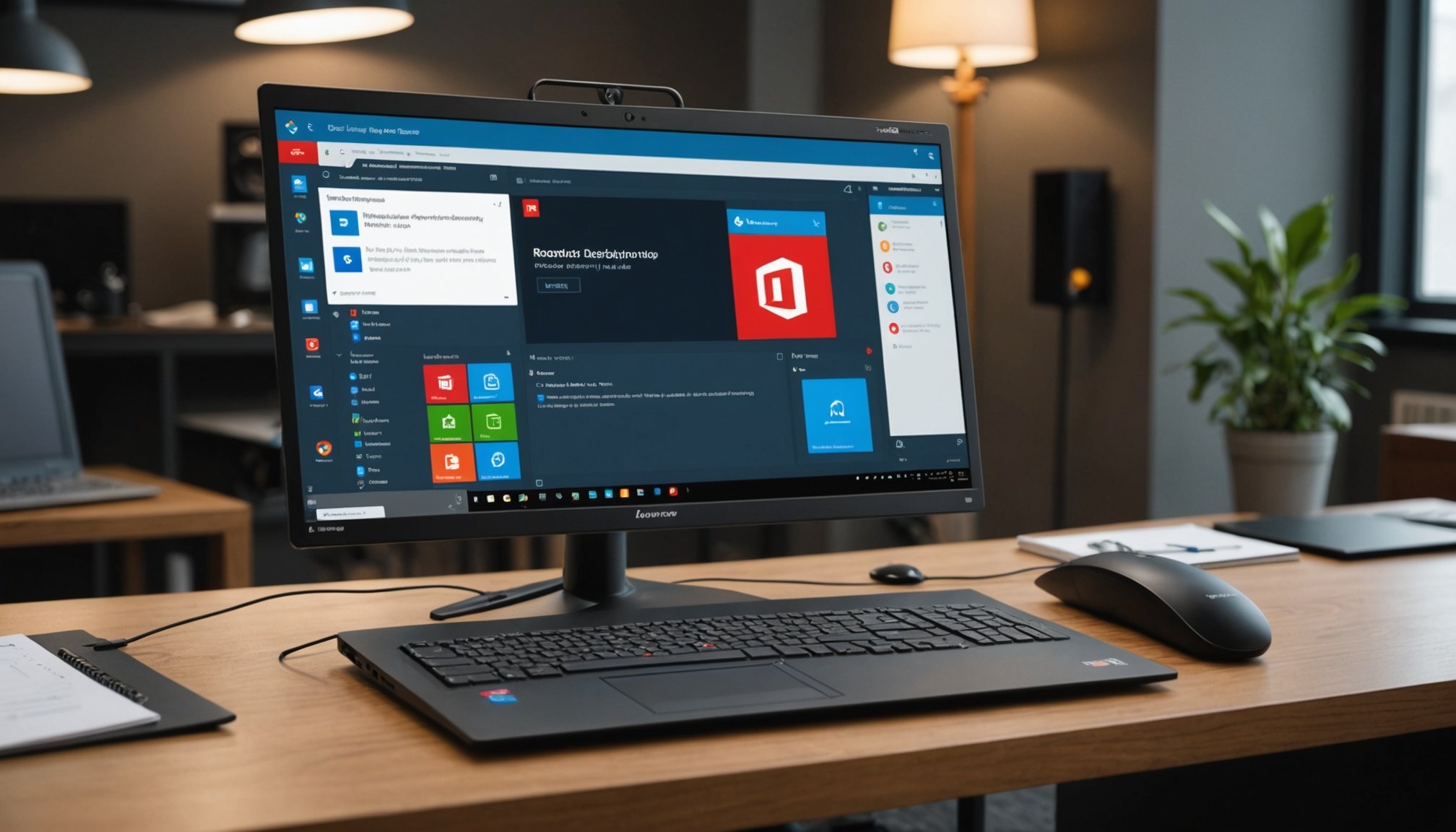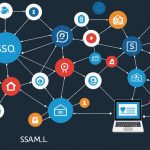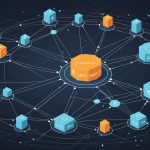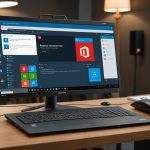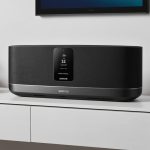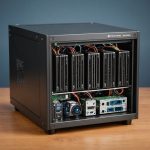Best Practices for Remote Desktop Security
Remote desktop security has become a critical concern in today’s interconnected world. The implementation of robust remote desktop security best practices is essential to safeguard sensitive data and maintain system integrity.
One key practice is enforcing strong passwords coupled with two-factor authentication (2FA). This powerful combination ensures that only authorised users can access remote systems. Strong passwords should be complex and unique, comprising a mix of letters, numbers, and symbols. Adding a layer of security, 2FA requires users to provide an additional verification factor, enhancing protection against unauthorized access.
Consistently updating software and managing patches is another fundamental practice. These updates often include vital security enhancements that protect against vulnerabilities. By keeping all software current, you substantially reduce the chance of exploitation by cyber threats.
Establishing a Virtual Private Network (VPN) for remote connections ensures secure data transmission by encrypting the information, making it indecipherable to malicious actors. A VPN masks the user’s IP address, creating a secure channel over which data can flow without being intercepted.
In parallel : Unlocking the Power of Sonos Arc: The Ultimate Guide to Multi-Room Audio with Google Assistant for Exceptional Sound Quality
Implementing these best practices helps in creating a strong foundation for remote desktop security. By being proactive, organizations can protect their assets and maintain operational reliability in an ever-evolving digital landscape.
Recommended Software for Enhanced Remote Security
Selecting the right remote access software is paramount to bolster remote security. For secure navigation through this digital landscape, start by integrating reliable remote desktop applications. These applications provide controlled, encrypted pathways, ensuring data remains safe during transit. Prefer those that offer features like session recording and user access logs, enhancing transparency and traceability.
Another pillar of remote security is utilising robust antivirus and anti-malware tools. These are the first line of defence against intrusions. Regular updates are crucial, as they tackle evolving threats. A system without active antivirus measures resembles a fortress with an open gate—ripe for any malicious entry.
Monitoring tools also play a vital role by continuously watching over remote access activities. These tools offer real-time alerts on suspicious actions, enabling timely interventions. They often come equipped with detailed analytics and reports, which prove invaluable for identifying patterns and potential vulnerabilities.
Maintaining a secure remote environment entails a comprehensive approach, integrating reliable software solutions with constant vigilance. Ensuring each component is optimally configured provides a safety net against the multifaceted challenges of remote connectivity. Keeping abreast of software improvements and security practices ultimately fortifies an organization’s defence against digital adversities.
Identifying and Mitigating Common Vulnerabilities
As remote desktop systems become a staple in modern workplaces, understanding remote desktop vulnerabilities is vital. These vulnerabilities often include weak passwords, unpatched software, and inadequate access control measures that expose systems to attacks like brute force, man-in-the-middle, and ransomware.
In order to safeguard systems, conducting thorough security audits and assessments is indispensable. These audits help pinpoint potential weaknesses by evaluating software configurations, user access protocols, and system logs. Regular audits establish a proactive security posture, minimising risks through early detection.
To effectively identify common threats, organisations should employ advanced monitoring tools. These tools are designed to track remote access activity, providing real-time alerts on suspicious events. This immediate feedback enables swift reactions to potential breaches, thus maintaining system integrity.
Mitigation strategies might also include adopting robust endpoint protection solutions. Such solutions address vulnerabilities by deploying firewalls, intrusion detection systems, and antivirus software tailored for remote desktop environments. Implementing multi-layered security approaches further strengthens defenses against external threats.
Ultimately, a combination of proactive audits, vigilant monitoring, and strategic protection measures will fortify remote systems against prevalent vulnerabilities, safeguarding organisational assets and enhancing operational continuity.
Step-by-Step Checklist for Securing Remote Desktop Connections
Pre-Connection Security Measures
Securing remote desktop connections begins with pre-connection security measures. Start by verifying all software, including remote desktop protocols, are updated to the latest versions. This ensures any known vulnerabilities are patched, minimizing risks. Equally important is confirming that antivirus and anti-malware programs are optimally configured and updated, providing a protective shield against malicious attacks.
Best Practices During Remote Sessions
Once a connection is established, adopting best practices during remote sessions becomes paramount. Enable encryption, such as using a Virtual Private Network (VPN), to safeguard data in transit and maintain confidentiality. Continuous monitoring of the user activity through reliable monitoring tools is essential, as it allows for real-time detection of any unusual access patterns or behaviors.
Post-Connection Security Review
Conclude your remote sessions with a post-connection security review. This involves logging all activities and reviewing any alerts triggered during the session, helping identify patterns that need attention. Regular audits ensure that the configurations remain secure and effective over time. Encouraging employees to report any suspicious activities can further strengthen defense mechanisms, creating a robust security environment adaptable to evolving threats.
Configuring Your Lenovo ThinkCentre M90n for Safe Remote Access
Ensuring safe remote access on a Lenovo ThinkCentre M90n involves detailed configuration steps tailored to enhance security.
Access Control Settings
First, establish robust access control settings. Assign unique user credentials that include strong, complex passwords. Implement Network Level Authentication to authenticate users before a connection is established, preventing unauthorized access. Adjust user permissions, allowing only essential access to reduce potential security risks.
Enabling Network Level Authentication
Network Level Authentication (NLA) is crucial. It prompts users to authenticate before connecting, significantly reducing system vulnerability to exploitation. Enable NLA through system settings by navigating to control panel options specific to remote desktop settings. Doing so establishes a first line of defense against cyber threats.
Firewall Configuration
Configuring the system’s firewall is vital for monitoring incoming and outgoing traffic. By customizing firewall rules, you can block unauthorized or suspicious connections. Ensure the firewall is active and updated as part of the general protection strategy. Consider integrating additional firewall solutions if in-built features need enhancement.
Incorporating these configurations in your Lenovo ThinkCentre M90n efficiently strengthens remote access security. Each step requires careful execution to maintain system integrity and safeguard sensitive information during remote operations.
General Cybersecurity Principles for Remote Work
In the realm of cybersecurity for remote work, employee training is crucial. Ensuring all staff are aware of potential threats, such as phishing and social engineering, can drastically reduce risks. Regular sessions on security protocols and the consequences of breaches enhance vigilance, equipping employees with the necessary knowledge to act prudently.
Developing a robust cybersecurity policy for remote operations is also essential. This document outlines the protocols, acceptable use of devices, and best practices that employees must follow. It provides a framework for secure remote operations, detailing measures like the use of VPNs, encryption, and secure password management. A well-defined policy serves as a guide, ensuring consistency and clarity across the organization.
Furthermore, keeping both software and hardware secure is vital. Remote work environments should ensure devices are safeguarded with up-to-date antivirus programs and regular patch updates to eliminate vulnerabilities.
- Regular cybersecurity training
- A comprehensive security policy
- Hardware protection
These components form the backbone of secure remote operations. Prioritizing education and policy development, alongside maintaining robust cyber defenses, ensures a secure environment. This balanced approach effectively mitigates risks, fostering a culture of cyber awareness.

